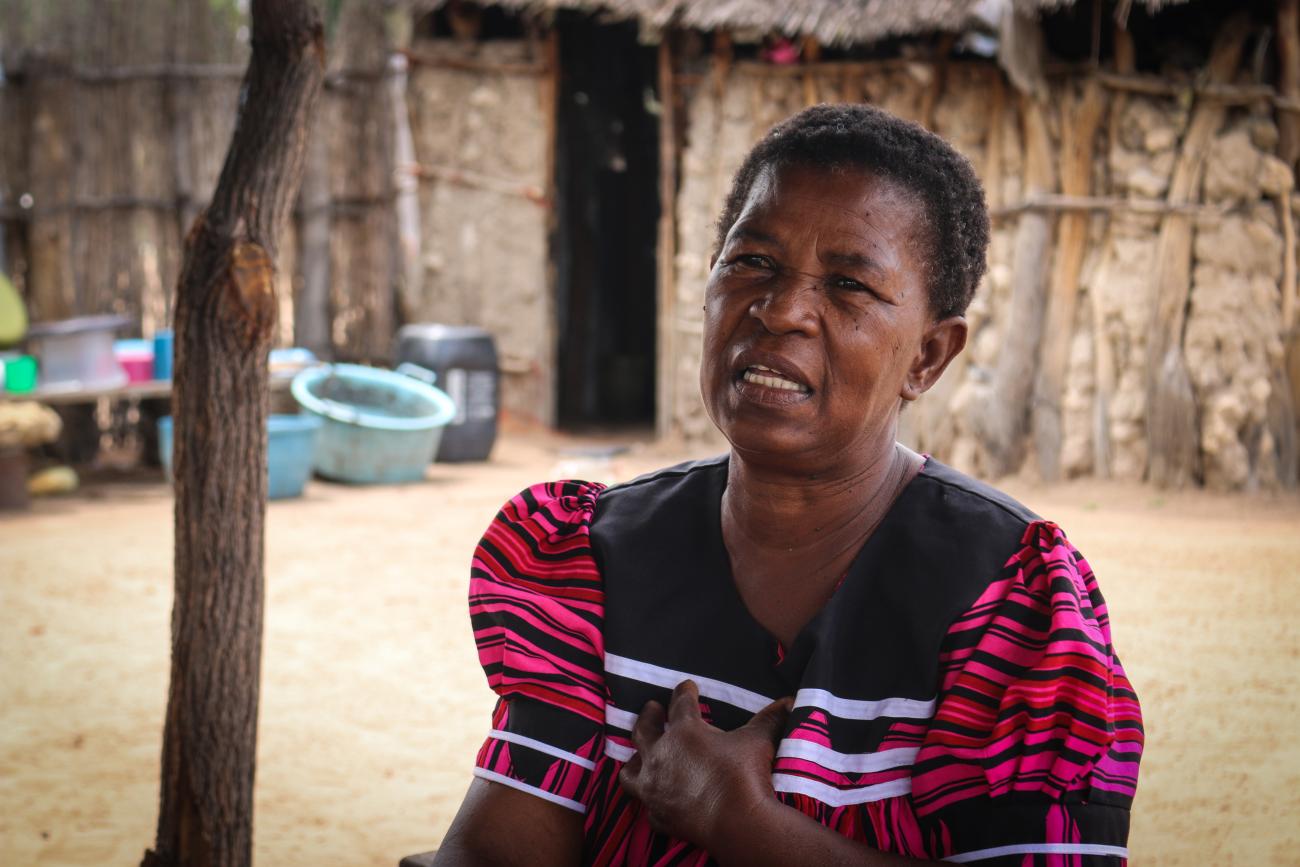A Lifeline in the Kavango: Maria’s Path to Resilience through WFP assistance

In the heart of Namibia’s Kavango East Region, where the rain has been elusive for years, Maria Kameya stands as a testament of resilience.
At an age when most would seek rest, the 61-year-old battles daily to provide for her family. Her story is one of hardship, but also of hope, thanks to the World Food Programme’s (WFP) commodity voucher programme, funded by the United Nations Central Emergency Response Fund (UN-CERF).

For years, the El Nino induced drought has ravaged Maria’s village of Mupini 2, leaving the land barren and the people desperate for food. “It has been very, very hard,” Maria recalls. “To survive, I had to go to the river to fish, sell what I could, and use the little money to buy maize meal. That’s all we had to eat.” Her days were a relentless cycle of fishing, trading, and struggling to stretch her earnings to feed her five grandchildren. With about only N$20 (around USD1) daily from selling fish, she can barely afford the basics. “Sometimes, I had to exchange fish directly for maize meal. There was no extra money for anything else,” she explains.
The drought relief aid distributed by the government through the Office of the Prime Minister offered some relief “We received 20 kg of maize meal and cooking oil, but it couldn’t feed the whole family” Maria says.
Maria’s struggles extended beyond food. Like many in the village, the lack of resources meant her grandchildren couldn’t attend school. “We couldn’t afford uniforms or stationery,” she explains. “The whole village has suffered.”

Her grandchildren, who stand quietly nearby, are a constant reminder of her responsibilities. Amidst these challenges, the WFP’s commodity voucher programme has emerged as a beacon of hope. The vouchers, which can be redeemed at local retailers for food, have brought a measure of relief to Maria and her family. “This food has helped us a lot,” she says, her eyes lighting up. “It has fed the family and contributed to our lives. Whatever little we got, has added to what we have.”
With support from UN-CERF, WFP is working with the Government of Namibia to address the impact of the drought in Kavango East, Kavango West, and Omaheke regions. This collaborative effort targets populations facing high levels of food insecurity, particularly those classified as IPC Phase 4 (Emergency) and children at risk of malnutrition.
Through this intervention, WFP is reaching 39,996 people with commodity food vouchers, providing families with immediate access to essential food while also supporting local markets. Additionally, WFP is implementing a Complementary Wet Feeding Programme, which offers hot, nutritious meals to 25,000 children aged 6 months to 9 years through community-based soup kitchens. This initiative focuses on preventing malnutrition and protecting children’s health and development during this critical period.
For Maria, this programme is more than just food—it’s a lifeline. It means her grandchildren can eat, and she can focus on rebuilding their lives. “We have been through so much,” she says. “But with this help, I feel there is hope.”
Maria’s story is a poignant reminder of the resilience of the human spirit and the transformative power of humanitarian aid. In the face of relentless drought and climatic challenges, the UN-CERF intervention has given her a chance to dream of a better future—one where her grandchildren can thrive, and the weight of survival is a little lighter.





